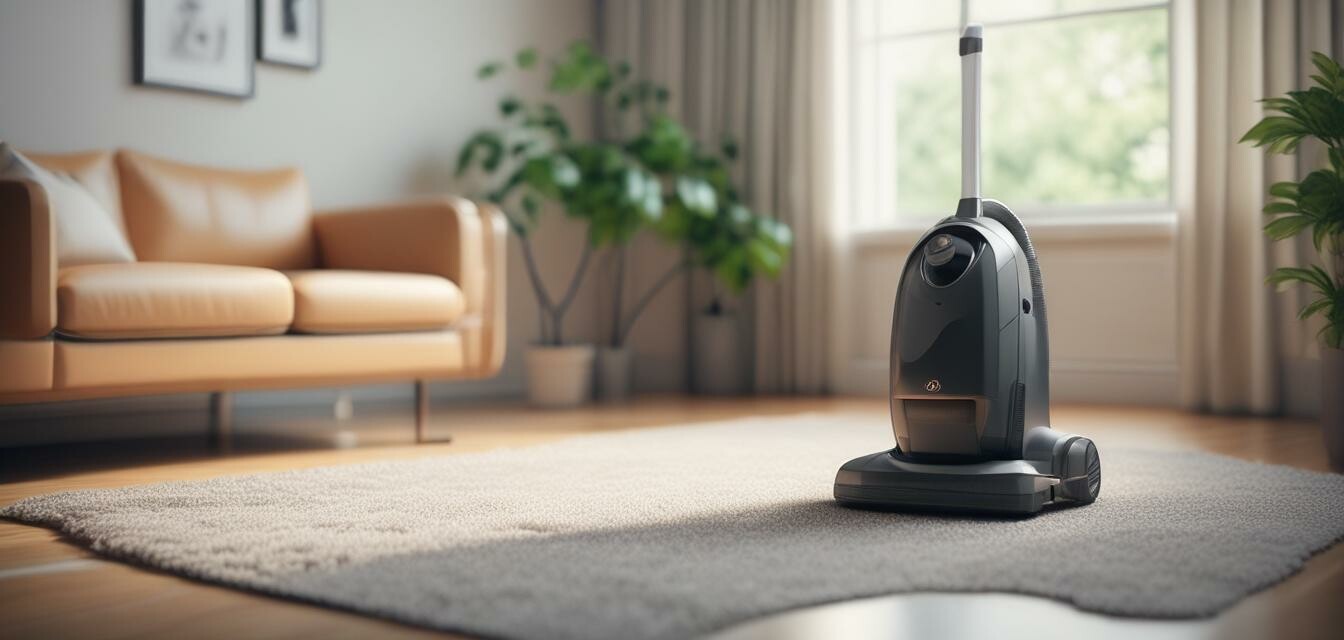
This article was generated using AI and is based on real customer reviews from the Amazon platform. It contains affiliate links, meaning we may earn a commission—at no extra cost to you. As Amazon Associates, we earn from qualifying purchases.
Allergy-Friendly Vacuums: Trends for 2024
Key Takeaways
- 2024 sees a rise in the adoption of smart technology in vacuum cleaners.
- HEPA filtration remains a crucial feature for allergy-friendly vacuums.
- Consumers are prioritizing eco-friendliness and sustainable materials.
- Noise reduction technology is becoming a must-have in modern vacuums.
- Robotic vacuums continue to grow in popularity, offering convenience for busy households.
As we step into 2024, the landscape of allergy-friendly vacuums is evolving rapidly. In response to the needs of allergy sufferers, new trends are shaping the way we think about home cleaning appliances. This article will highlight the major trends that are taking center stage in the vacuum market this year.
Smart Technology Integration
This year, we’re seeing an increased emphasis on smart technology in allergy-friendly vacuums. Features such as Wi-Fi connectivity, mobile app integration, and voice command capabilities are becoming more prevalent. Consumers can now control their vacuum cleaners remotely, schedule cleanings, and receive feedback on the cleaning performance, all from their smartphones.
Benefits of Smart Technology in Vacuums
- Efficient Cleaning: Automated scheduling allows for regular cleaning without user intervention.
- Enhanced Control: Users can adjust settings based on specific cleaning needs.
- Real-Time Monitoring: Users are informed about the vacuum's performance and maintenance needs.
HEPA Filter Innovation
HEPA (High-Efficiency Particulate Air) filters are still the gold standard for those looking to minimize allergens in their home. In 2024, manufacturers are focusing on improving the efficacy and longevity of these filters. Newer designs are being introduced that facilitate easier maintenance and replacement, making it simpler for users to keep their filters working at peak performance.
| Filter Type | Efficiency (%) | Longevity (Months) |
|---|---|---|
| Standard HEPA | 99.97 | 6-12 |
| Advanced HEPA | 99.99 | 12-24 |
Sustainability Focus
As environmental consciousness rises, more consumers are prioritizing eco-friendly designs in their vacuum cleaners. This year, manufacturers are responding with products made from sustainable materials and energy-efficient technologies. The trend reflects a growing demand for appliances that not only clean effectively but are also kinder to our planet.
Eco-Friendly Vacuum Features
- Recyclable materials used in construction.
- Energy-efficient motors that consume less electricity.
- Packaging made from recycled materials.
Noise Reduction Technology
No one enjoys a loud vacuum cleaner, especially in households where peace and quiet are valued. This trend is leading to the development of quieter models equipped with noise-reduction technology. By designing vacuums that operate at lower decibel levels, brands are making cleaning less intrusive and more comfortable for users.
| Vacuum Type | Average Noise Level (dB) |
|---|---|
| Robotic Vacuum | 55 |
| Upright Vacuum | 75 |
Robotic Vacuums on the Rise
Robotic vacuums are becoming increasingly popular in 2024, especially for allergy sufferers. These automated devices offer unique advantages such as convenience and efficiency, allowing homeowners to clean their floors with minimal effort. As technology progresses, robotic vacuums are now including advanced navigation systems and better suction capabilities, making them a practical choice for managing allergens.
Why Choose a Robotic Vacuum?
- Exceptional efficiency in cleaning while you handle other chores.
- Ability to reach under furniture and into tight spaces.
- Self-scheduling on a daily basis for constant upkeep.
Pros
- Advanced features enhance user experience.
- Effective in trapping allergens with improved filtration.
- Convenience reduces effort in maintaining cleanliness.
Cons
- Higher initial costs compared to traditional vacuums.
- Maintenance of smart features may require tech-savvy users.
- Battery life can be a concern for some robotic models.
Conclusion
As we look towards the future, 2024 promises to be an exciting year for allergy-friendly vacuums. With smart technology integration, improved HEPA filters, a focus on sustainability, and the rise of robotic vacuums, consumers have more choices than ever. By staying informed about these trends, you can make the best decision for your cleaning needs while keeping your home allergen-free.
Tips for Choosing the Right Vacuum
- Check for HEPA filters to effectively trap allergens.
- Consider smart features for added convenience.
- Look for noise-reduction technologies if you prefer a quieter experience.
- Research and read reviews about the sustainability practices of the brand.
For further reading on various types of vacuums, visit our sections on HEPA filter vacuums, bagless vacuums, and robotic vacuums to find the best option suited for your needs.